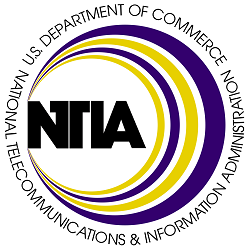
Fast, affordable Internet access for all.

A massive coalition of more than 300 broadband policy experts and organizations have written a letter to the U.S. government, warning that smaller broadband providers, nonprofits, and municipalities will be elbowed out of an historic $42.45 billion broadband grant program without some notable changes to program rules.
At the heart of their concerns sits the Broadband Equity Access and Deployment (BEAD) program, made possible by the recently passed infrastructure bill, and administered by the National Telecommunications and Information Administration (NTIA). The grant program is a once-in-a-lifetime opportunity to put a significant dent in America’s longstanding digital divide.
But BEAD program rules currently require grant recipients to obtain a letter of credit (LOC) from a bank, collateralized by cash or cash-equivalent. They also require grant winners to provide "matching funds of not less than 25 percent of project costs," though the latter restriction can be waived in some high deployment cost areas.
While the restrictions were intended to reduce the risk of project failure (a touchy subject for the government in the wake of problems with the FCC’s RDOF program), they require grant recipients to lock away vast and untouchable sums of capital for the duration of any broadband build, most of which last several years.
According to the coalition’s letter to lawmakers, such requirements present unnecessary obstacles for smaller ISPs and cash-strapped municipalities, undermining the infrastructure bill’s goal of equitable, affordable broadband for all.
“With the additional 25 percent match requirement, recipients will have a capital hurdle of more than 60 percent of their grant,” the coalition wrote. “We estimate a provider seeking a $7.5 million grant for a $10 million project will need at least $4.6 million of their own capital up-front.”
Connect Humanity’s Calum Cameron detailed the issues with the BEAD program’s LOC requirement in a July blog post, noting the rules would be particularly harmful for small and community-centered ISPs, minority and women-owned businesses, nonprofits, and municipalities–all of which face financial constraints bigger telecoms do not.
"Rather than demonstrating a provider's ability to construct a broadband network and provide high-speed broadband services to unserved and underserved Americans, the LOC is a measure of whether they can lock up valuable working capital over multiple years," this week’s letter noted. "While large incumbents may be able to bear this financial burden, most others can not.”
Further Tilting An Already Tilted Playing Field
Consumer advocates are quick to note that regional incumbent monopolies–which have a long history of taking taxpayer subsidies in exchange for unfinished networks–already exploit their wealth and political influence to dominate most government grant programs.

Regional monopolies already play an outsized role in determining broadband mapping and defining key terms like “broadband” and “underserved.” But they also use their deep budgets to file costly and pointless bureaucratic challenges against grant applicants looking to drive much-needed competition into monopoly-controlled markets.
Data routinely indicates that municipal broadband delivers faster, cheaper, and better broadband access. Any additional restrictions placed on municipalities further undermines the quest for affordable access.
Various state and local rules–including onerous state restrictions on community broadband–may prevent some municipalities from even receiving LOCs. Additional restrictions placed on which banks can issue LOCs also elbows out lower-rated banks, Community Development Finance Institutions (CDFIs), and philanthropic organizations, the coalition said.

“Even if these banks can be persuaded to issue $10.6B in LOCs, the capital needed to collateralize them means billions of dollars are sitting idle and not being used to buy equipment, lay fiber, and train the next generation of broadband engineers,” the signatories wrote. “We do not believe this is what the NTIA had in mind when it adopted the LOC requirement.”
Among the critics of the NTIA’s LOC requirements is Gigi Sohn, whose nomination to the FCC was undermined by a vicious smear campaign orchestrated by telecom and media giants. Sohn has since gone on to serve as Executive Director of the American Association for Public Broadband (AAPB), and issued a statement urging the NTIA to change course.
“As things stand, BEAD is engineered to shut out the providers most willing and able to build for America’s least connected communities,” Sohn said. “These are local ISPs, minority and women-owned operators, nonprofits, and municipalities that know these communities and can connect them — but for a lack of capital. So we’re calling for Secretary Raimondo and Assistant Secretary Davidson to make a fix that will make the program more competitive and live up to its promise to connect the millions of American families still living without the broadband they need.”
NTIA Insisted There Was No Better Path Forward
At an online event last June, BEAD Program Director Evan Feinman responded to concerns about the LOC requirements by noting they were an imperfect solution intended to minimize deployment failure rates.
"Every project that's undertaken will expend some funds prior to failing and then have to start back at square one with a new provider if it turns out that a provider doesn't have the wherewithal to undertake a project,” Feinman said. “We had to err on one side or the other, there was no way to hit it right on the nose.”

The NTIA stated that it will waive the LOC requirement on a case-by-case basis–particularly in areas where broadband deployment costs are particularly high–but also noted that any such waivers would be "tightly controlled.”
Other successful subsidy programs see no such restrictions. The USDA’s Rural Utilities Service ReConnect program, for example, requires a 25% match but not a LOC, releasing grant funds on reimbursement. The Treasury Department’s Capital Projects Fund has no requirement either for a match–or an LOC.
In a statement provided to The Institute For Local Self Reliance, the NTIA said it had reviewed the letter, but offered little indication that rule changes would occur anytime soon.
"We have received the letter and appreciate these advocates raising their concerns and suggestions,” the NTIA said. “Our goal is to connect everyone in America with affordable, reliable high-speed Internet service while being good stewards of taxpayer dollars. We want to encourage robust participation from service providers of all types, and we require states to ensure that grant recipients can build a high-quality network and operate it for years to come. We will continue to monitor and, as our program rules suggest, we will work with states and territories to help them meet both objectives."
Advocates Recommend Several Simple Program Rule Changes
Ideally, the coalition argued that the American public would be best served by eliminating the LOC requirements entirely. If the NTIA isn’t interested in removal, it noted that grant winners should be provided several alternatives to a LOC.
One such alternative could be performance bonds, which can provide a financial guarantee for the delivery of a broadband deployment project, without requiring providers to front significant swaths of unusable capital to secure BEAD funding.

The coalition suggested that another alternative to the LOC requirement could be delayed reimbursement, where ISPs and state broadband offices agree on a set of project milestones that must be achieved in order to release grant tranches.
“This commonly used approach will empower Broadband Offices to work effectively with the applicants they deem best positioned to connect unserved and underserved communities in their state,” the signatories suggested.
In a Fortune Op-Ed Larry Irving, former Assistant Secretary at the NTIA, joined the chorus of experts urging the agency to remove or modify the LOC restrictions to ensure equitable, diverse deployment of affordable broadband.
“Without a course correction to NTIA’s BEAD program, this record investment could be an opportunity wasted,” Irving said. “Thousands of communities have waited almost three decades to be connected. Let’s not force them to wait longer because of an unnecessary bureaucratic burden.”
Header image of red tape blocking building entrance courtesy of Flickr user Ministry of Housing, Communities and Local Govt, Attribution-NoDerivs 2.0 Generic (CC BY-ND 2.0)
Inline image of credit report courtesy of FreePix.uk, Attribution-ShareAlike 3.0 Unported (CC BY-SA 3.0)
Inline image of obstacle stock image courtesy of Pix4Free, Attribution-ShareAlike 3.0 Unported (CC BY-SA 3.0)
Inline image of bond button on computer keyboard courtesy of Advantus Media Inc., Attribution-NoDerivatives 4.0 International (CC BY-ND 4.0)
